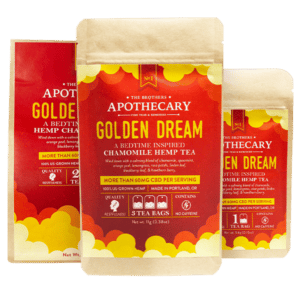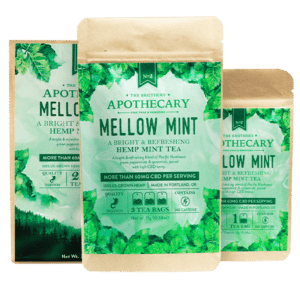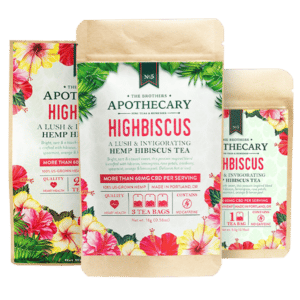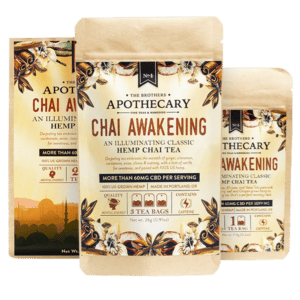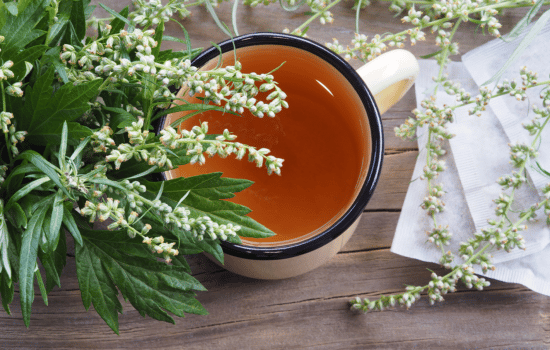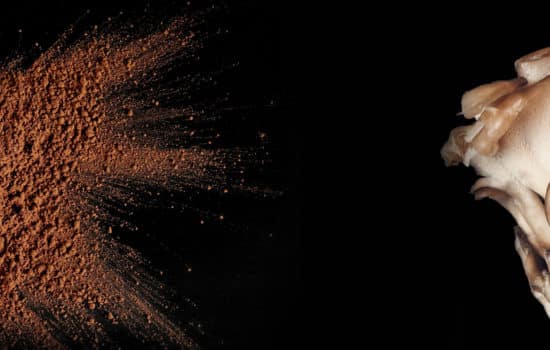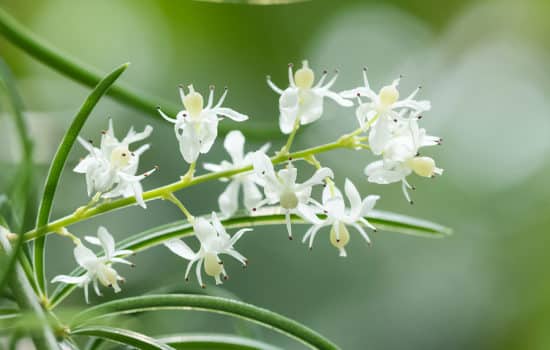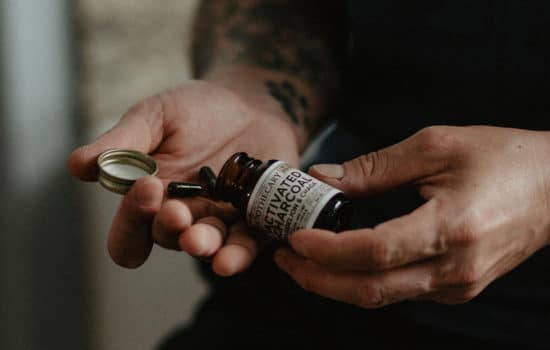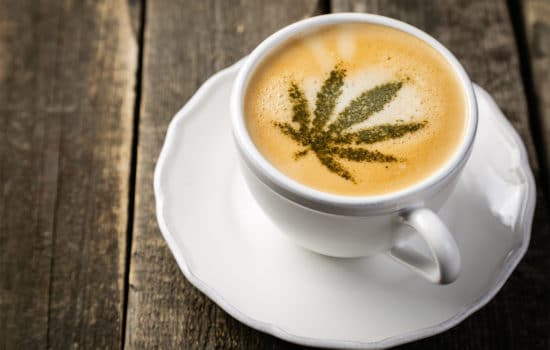Goodness, do we love honey. Who doesn’t?
Whether soothing a sore throat, sweetening a tea, elevating a salad, or adding some extra pizazz to a pizza or peanut butter sandwich, honey is always coming through for us in times of need. And our go-to? Polyfloral honey.
So what exactly is polyfloral honey, and why is it a favorite here at The Brothers Apothecary? Read on to learn all about this wellness-boosting fan favorite.
What Is Polyfloral Honey?
All forms of honey fall into two categories: monofloral and polyfloral.
While monofloral honey is made using nectar and pollen from a single type of flower, polyfloral honey uses nectar and pollen from multiple flower species.
How Is It Made?
Like all honey, polyfloral honey is made by our trusty friends, the honey bees.
Honey bees obtain nectar and pollen directly from the source (flowers) and then use enzymes to break them down into simple sugars inside the hive. The movement of the bees’ wings helps with the evaporation of water from the nectar, transforming it into the honey we know and love. The bees use this honey to give them the energy they need for flight and to insulate their hives in the colder months.
But, luckily for our taste buds and our wellbeing, bees are known to make a surplus of honey. With an average of around 55 pounds of unneeded honey made in a single hive per year, it is beneficial for us humans and bees alike for beekeepers to harvest that excess honey.
Once out of the hive, the surplus honey is strained to remove debris and wax. For raw honey, this keeps the honey’s plant compounds, called polyphenols.
However, other forms of honey are further processed with heating and filtration methods that enhance the appearance of the honey and destroy many of its beneficial properties.
Here at The Brothers Apothecary, we only use the highest quality honey sourced from Willamette Valley farms.
How Is Polyfloral Honey Different From Monofloral Honey?
To make polyfloral honey, the bees are given access to a number of different types of flowers at once. The bees will move from flower to flower, collecting nectar and pollen to bring back to the hive. From there, all of the many nectars are combined to create a honey rich in diverse plant compounds.
For monofloral honey, beehives are largely surrounded by only a single flower species, so that the majority of nectar and pollen are coming from the same type of flower and contain the same single type of compounds, nutrients, and flavor.
Wildflower honey often has a darker amber color than monofloral honey, as the pigments of different nectars mix together.
What Does Polyfloral Honey Taste Like?
Polyfloral honey, also known as wildflower honey, tends to have a more complex, bold flavor with light floral undertones. The flavor will also vary based on the types of flowers growing in a specific region at a specific time.
What makes polyfloral honey so unique is that honey bees will collect different amounts of nectar from different flowers, so no two batches of wildflower are ever exactly the same, and can never be replicated in exactly the same way. This means that each jar of polyfloral honey offers a unique tasting experience, with flavors varying slightly based on how much of each nectar was incorporated. It is all up to the bees!
What Are the Benefits of Polyfloral Honey?
Each type of flower contains polyphenols and flavonoids, offering their own unique beneficial properties. The combination of nectars within polyfloral honey can provide even more benefits than monofloral honey as various compounds work together.
Immunity Support
Pollen can help stimulate the immune system by introducing vitamin C into the body, which can support the body in producing infection-fighting white blood cells. And since polyfloral honey contains different pollen types, they can provide enhanced immune support.
Not to mention, the many antioxidants coming from the different types of nectars in polyfloral honey can also support the immune system by helping reduce swelling throughout the body.
And honey’s antibacterial properties may be even more pronounced in polyfloral honey, as it contains a more diverse range of phytochemical components.
Skin Health
Believe it or not, raw polyfloral honey has antibacterial properties that benefit your skin.
One of the enzymes found in honey is glucose oxidase, which can break sugar down into hydrogen peroxide, an antimicrobial compound that can help protect the skin from infection and support the body in healing wounds.
The polyphenols in wildflower honey also serve as antioxidants, which are important in maintaining skin health.
Antioxidants can help reduce the effects of free radicals in the body, which are known to attack healthy skin cells. As we age, it becomes harder for the body to fight off free radicals, which can lead to wrinkles, lines, and blemishes. Antioxidants can protect skin cells by stabilizing free radicals.
All raw honey has antioxidant properties, but polyfloral honey can contain even greater amounts of these wellness-boosting molecules as it combines polyphenols from multiple flowers.
Digestive Support
The anti-swelling properties of raw honey can help reduce irritation in the stomach lining, which can help soothe a sour stomach.
Honey’s antioxidants can also support digest health, as free radicals may target the cells in the digestive tract. This means that the antioxidants in wildflower honey can help protect the digestive tract from damage, which can in turn help with indigestion.
Appetite Support
The unrefined sugar in honey is easily broken down into carbs in the body, making it an excellent source of energy.
One study also found that honey may affect appetite differently than other forms of sweeteners by delaying the production of the hunger-inducing hormone, ghrelin.
Soothes Throat Discomfort
Who among us hasn’t tried a spoonful of honey to soothe a sore throat? While you may have wondered if this remedy is simply an old wives tale, this tried-and-true method is backed by the science.
Honey can help bring relief to a sore or scratchy throat by creating a protective layer over the throat lining, which can help prevent swelling and reduce irritation. It’s important to note, though, that honey can only provide this support when consumed raw and unheated.
Heat can destroy the compounds known to protect the throat lining, rendering them ineffective.
This means that you are better off taking honey by the spoonful rather than mixing it into hot tea for throat support, or wait until your tea has reached room temperature before mixing in your polyfloral honey.
How Do I Know If Honey Is Polyfloral?
Most polyfloral honey will be labeled as wildflower honey, whereas monofloral honey is often named after the flower used, such as Clover Honey or Orange Blossom Honey.
Polyfloral honey also tends to have a darker coloring than monofloral honey, due to the many flower pigments coming together.
How Much Polyfloral Honey Should I Consume?
As wonderful as honey is, it–like most things–is best enjoyed in relative moderation. It is recommended that you consume no more than two and a half teaspoons of honey per day.
Of course, feel free to take more to soothe a sore throat, if needed!
However, you may want to avoid polyfloral honey if you have a pollen allergy, since it is hard to know exactly which types of pollen end up in the final product.
Honey is also not safe for children under the age of one, as their digestive systems cannot yet handle some of the bacteria in honey the same way that older digestive systems can.
How Long Until I See Results?
The soothing benefits of honey on a sore throat or irritated skin can kick in almost immediately, while the effects of antioxidants can provide benefits over time.
Is Polyfloral Honey Raw and Unfiltered?
Polyfloral honey can be found in either a raw or processed form.
Unpasteurized, raw polyfloral honey has the most concentrated amount of wellness-boosting compounds, as it does not go through any filtration process beyond straining.
While the filtration process used to pasteurize honey can remove healthy bacteria and degrade fragile polyphenols, using raw honey ensures that those polyphenols make it all the way from the hive and into your body where their beneficial effects can take hold.
The Bottom Line
Wildflower honey contains a bee-autiful blend of diverse botanical compounds and complex flavors.
At The Brothers Apothecary, we infuse our wildflower honey with CBD, providing even more wellness benefits. From our spicy Aji Limo Chili CBD Honey to calming Lavender CBD Honey, we have a flavor suitable for every occasion.
Check out all of our locally-sourced polyfloral honey, along with our other CBD products, at The Brothers Apothecary shop!
Sources
Jesse Richardson is the co-founder of The Brothers Apothecary. He's an avid tea drinker and the primary creator behind The Brothers' products. An undergraduate of UCLA for Political Science, Jesse currently studies Medicinal Plants at Cornell University and The International School of Herbal Arts & Sciences.



